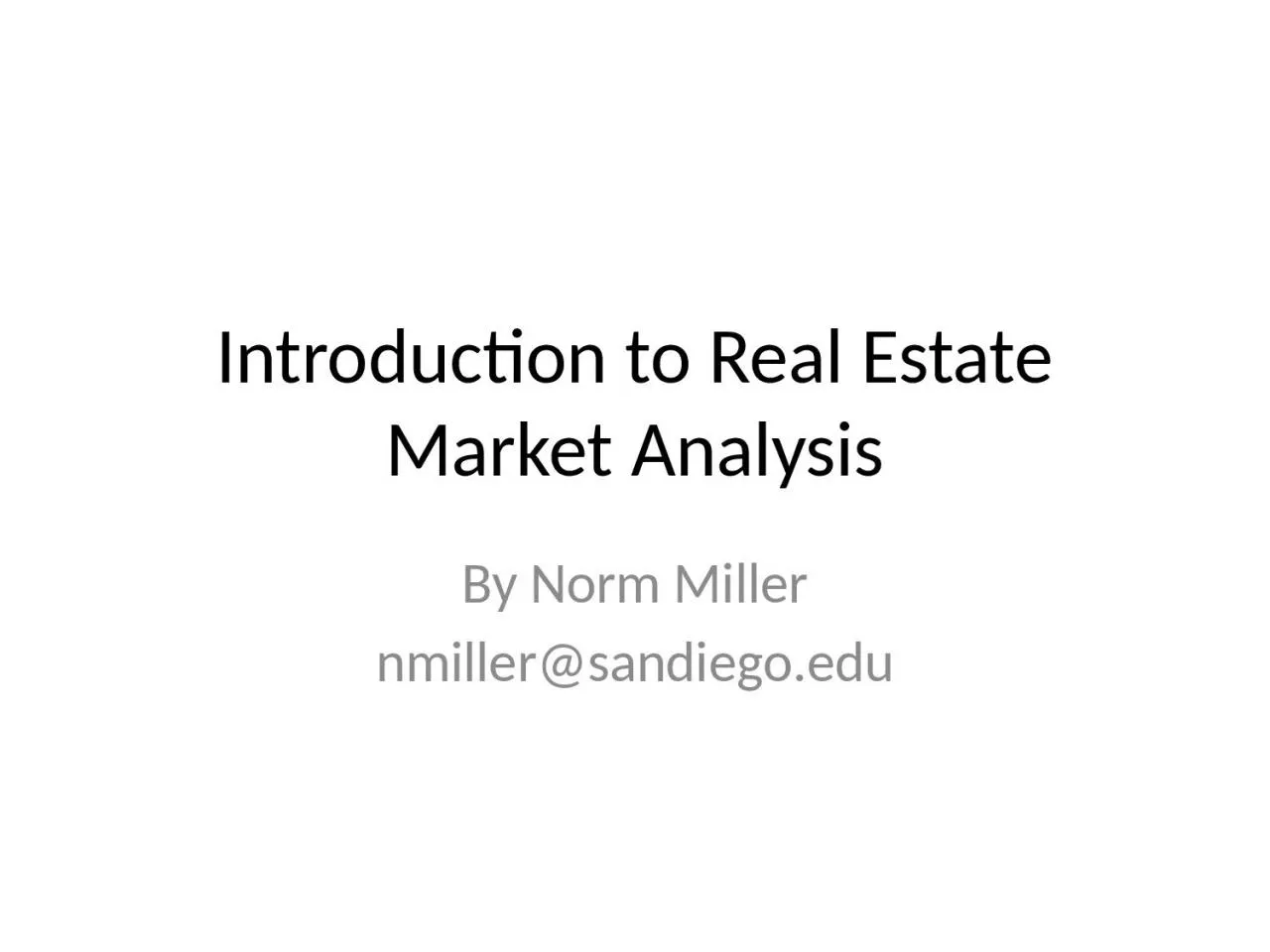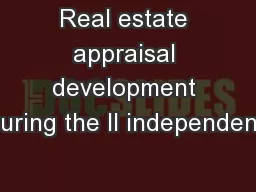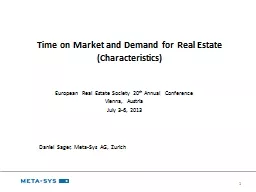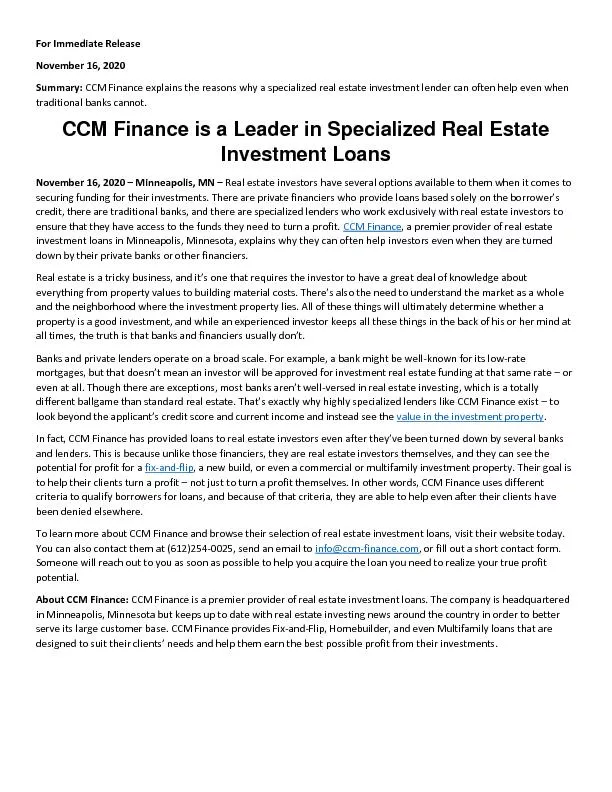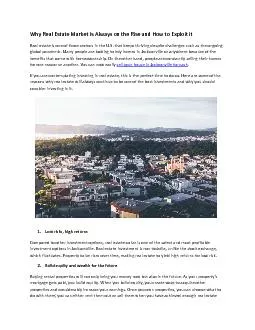PPT-Introduction to Real Estate Market Analysis
Author : lauren | Published Date : 2023-11-03
By Norm Miller nmillersandiegoedu Content A little time on real estate regulations Controls on Supply Real estate cycles and value trends Market Dynamic patterns
Presentation Embed Code
Download Presentation
Download Presentation The PPT/PDF document "Introduction to Real Estate Market Analy..." is the property of its rightful owner. Permission is granted to download and print the materials on this website for personal, non-commercial use only, and to display it on your personal computer provided you do not modify the materials and that you retain all copyright notices contained in the materials. By downloading content from our website, you accept the terms of this agreement.
Introduction to Real Estate Market Analysis: Transcript
Download Rules Of Document
"Introduction to Real Estate Market Analysis"The content belongs to its owner. You may download and print it for personal use, without modification, and keep all copyright notices. By downloading, you agree to these terms.
Related Documents

